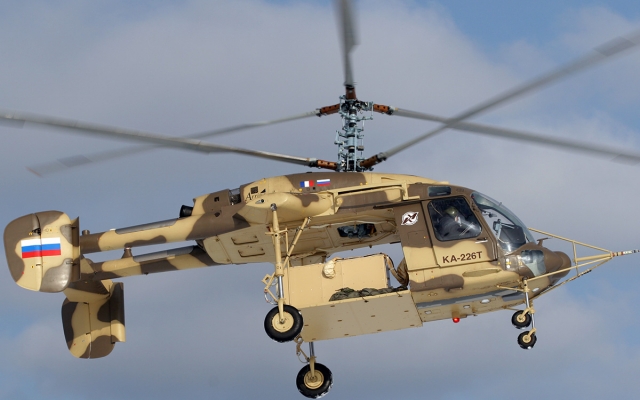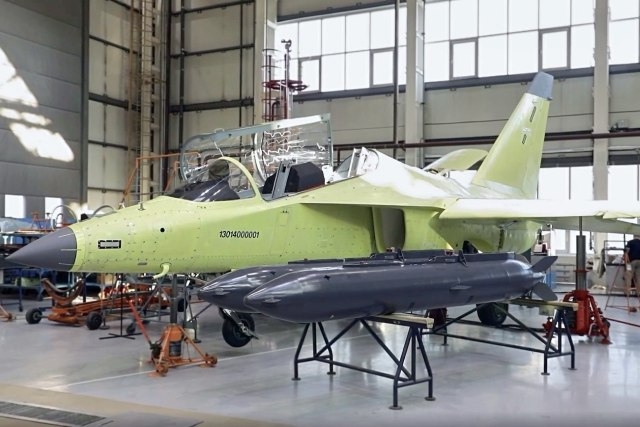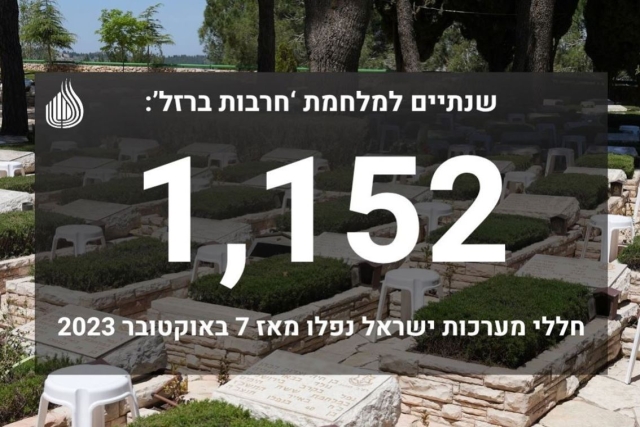Rosoboronexport: Outlook for Arms sales to India

KA-226T helicopter
On the occasion of 20 years of Russian arms export agency, Rosoboronexport, Defenseworld.net discussed its market outlook - especially in relation to India - with Konstantin Makienko, deputy director of the Centre for Analysis of Strategies and Technologies (CAST), an independent Russian think tank. Key comments: “Rafale and Super Hornet too heavy for Indian Aircraft Carriers…. "Su-57 and Armata MBT have future in India.” Konstantin Makienko
DW : Please tell us about the Rosoboronexport's role today in the Russian system of military and technical cooperation with foreign countries, especially, in relation to India?
Konstantin Makienko: Rosoboronexport that was established 20 years ago pays great attention to the implementation of industrial projects, especially in relations with such large industrial countries as India. The very first large projects in the field of Soviet-Indian military-technical cooperation provided for a license to India and for the manufacture MiG-21FL fighter jets in the sixties. In the eighties, licensed production of MiG-27ML fighter-bombers was performed. And of course, one should mention the Su-30MKI heavy multipurpose fighter jet, which today has become the crucial element of the Indian Air Force's combat fleet. In the domain of the ground forces, the production of the T-72S and T-90S main battle tanks, as well as the BMP-2 infantry fighting vehicles, was launched in India. Of the most recent examples, we can also note the contract for the construction of Project 11356 Talwar-class frigates in Goa (Shipyard).
DW : Have you created equipment from scratch especially developed to suit Indian requirements?
Konstantin Makienko: Indian partners often seek to acquire equipment, modified or entirely developed according to their own specifications. For example, the USSR created the An-32 military transport aircraft especially for India as optimized for operation in hot climates and at high-altitude airfields. The Project 61ME destroyers were designed according to specification of the Indian Navy. It is curious, that finally the Indian project turned out to be more effective than the Soviet ships of Project 61, on the basis of which the Indian version was developed. The Indian Navy received a multipurpose ship, while the Soviet version was an anti-submarine ship. It is worth noting that the 61ME Project destroyers are still in service with the Indian Navy, which clearly indicates the success of this design. If we talk about the post-Soviet period, then again it is necessary to return to the Su-30MKI project. When developing a technical appearance of this fighter jet, the Indian military set a very high technological standard, which was at the limit of the then capabilities of the Russian aero industry. Moreover, subsystems of third countries, mainly France and Israel, as well as Indian equipment, including the mission computer, were integrated into the onboard equipment suit. Thus, Rosboronexport has much experience in creating military products according to Indian requirements.
DW : Given that the S-400 Triumf ADMS contract has become the biggest military-technical cooperation project between Russia and India, what can be said about the current Russian market offer in the domain of air defense systems?
Konstantin Makienko: The USSR and Russia have always possessed a very capable industry for developing and producing the air defense systems. The peculiarity of the Russian market proposals is that Rosoboronexport can supply its partners with the entire range of air defense systems - from portable anti-aircraft missile systems to long-range anti-aircraft missile systems like S-400. It can be said that the Russian Federation offers to the global market virtually on a turnkey basis a complete set of solutions for air defense, including the recently proposed systems to combat small-sized UAVs, i.e. complete air defense network.
DW : What is the current state of the Russia-India military cooperation, given the Indian policy of arms procurement diversification?
Konstantin Makienko: Despite India's diversification of weapons sources and the development of its own defense industry, it is Russian weapons that dominate all branches of the Indian Armed Forces. This applies to the Air Force, the Navy, and the Ground Forces. Two major features of Russia as a partner of India can be highlighted. Firstly, Russia is ready to transfer practically any conventional weapons technology to India. At the same time, the license depth is not limited by anything - as in the Su-30MKI case – India is assembling AL-31FP turbofan engines. In general, there are only a handful of countries in the world capable of producing such complex systems as the AL-31FP engine. India is one of these states. Russian and Indian military-political interests are so compatible, so harmonious that Rosoboronexport has no deterrent motives for technology transfer. And secondly, Russia has transferred, and is ready to transfer in the future extremely powerful systems that no one else in the world trades in. For example, we are talking about an aircraft carrier. For India, Russia remains the only source of such technologies.
DW : What is your personal assessment of the Su-30MKI Modernization program?
Konstantin Makienko: The technical appearance of the fighter jet was formed over twenty years ago. Of course, the deep upgrade is needed. Ideally, a new radar with an active phased array and new weapons should be integrated. The specific technical appearance of modernized aircraft should be determined only by the Indian Air Force in accordance with its needs and financial capabilities. I can only say, that the Su-30 platform itself and the open architecture of the avionics provide the most significant and flexible capabilities, up to the integration of such heavy aircraft weapons as the BrahMos-A weighing 2.5 tons. No other multi-role fighter of the Indian Air Force can provide such an opportunity. The early modernization is also needed because the Su-30MKI remains, despite the Rafale purchase, the most utilized IAF's fighter jet, and constitutes its mainstay. It provides the IAF with a tactical, operational and even a operational-strategic tool.
DW : India wants to replace the MiG-29K carrier borne jets with Boeing F/A-18 or Rafale. Any thoughts on this?
Konstantin Makienko: The F/A-18 fighter jet is too heavy for the existing Vikramadytia aircraft carrier, and this is even more so for the lighter Vikrant career that is under construction. Rafale can theoretically be integrated on both of these ships, but the entire take-off and landing system, the entire system of aviation technical equipment was originally developed for the use of Russian aircraft. As far as I understand, this also applies to Vikrant. Rebuilding ships for the CATOBAR system will be so laborious and expensive that it is easier to lay down a new ship and build it from the very beginning to make suitable for catapult takeoff. In the meantime, for the next 10-15 years (at least), I do not see any alternative to the MiG-29K fighter jet. Here we return to the issue of joint projects. This is a great opportunity for the Indian Navy and the Russian Navy to jointly develop unified requirements for the modernization of this fighter jet and to jointly purchase a batch in the interests of the two countries, or at the same time modernize the existing fleet if the purchase of new carrier-based aircraft seems excessive. The project to build the aircraft carrier Vikramaditya for the Indian Navy is a prime example of the special relationship between Russia and India in the field of military-technical cooperation. By having received this ship and MiG-29K carrier aircraft for horizontal take-off, the Indian fleet significantly levelled up its capabilities. The ship rebuilding project itself is an engineering miracle. During the modernization works the radio-electronic equipment and the power plant were completely replaced, the type of aircraft weapons was changed.
DW : The media have reported about the Indian interest toward the Sprut-SDM1 light amphibious tank. What are the major advantages of this tank?
Konstantin Makienko: The most significant feature of Sprut-SDM1 is that while being a light tank it possesses the firepower of the main battle tank – the 125 mm gun, which can also fire guided missiles. Its major competitors on the global market, the light tanks from China (Type 15) and Turkey (Kaplan), are armed only with a 105 mm gun. Unlike them, Sprut-SDM1 has good amphibious capabilities and can even use its main armament while swimming. The new Russian tank also is a genuine light tank in terms of weight – the Chinese and Turkish tanks are heavier. The light weight gives Sprut-SDM1 a unique cross-country ability in the mountains and in swampy areas. We should also point out, that Russia currently proposes at the global market not only the armoured vehicles, but also the specially designed digital simulating systems, which ensure 100% real-life simulation of the vehicle's combat action without wasting ammunition, fuel etc. A product line of such systems was showcased at the ARMY-2020 expo this August by the Training Systems, the major developer in this field.
DW : What is left wanting in the Russia, India military-technical cooperation?
Konstantin Makienko: I think,that we should more actively develop joint projects in the interests of the armed forces of both states. Moreover, our countries have such a high level of compatibility and complementarity of military-political interests that it is possible and necessary to build the elements of a common military-industrial space.
DW : Are you happy with the progress in the KA-226T project? When can we expect a firm contract on this?
Konstantin Makienko: Ka-226T is absolutely indispensable for the Indian military given its capabilities in the mountains and the need to replace the ageing fleet of Chetak helicopters, constructively belonging to the early 1960-s helicopter era. The Ka-226T project is also a unique chance for India to master a number of crucial helicopter engineering technologies, including the unique coaxial rotors scheme. But despite the obvious interest of the military in Ka-226T, the implementation of the project (i.e. signing the contract) for its production in India has been in a standby mode for several years due to, probably, judging by previous experience, overestimated requirements for the level of localization. The planned level, reported by the Indian media this year, in fact is already very high for any aerospace product. Ka-226T is not a handgun, as all aerospace products it is a complex, high-tech system. 100% localization is just not possible to be achieved at once. The global practice of concluding and fulfilling contracts for the localization of such military equipment indicates a gradual increase in the level of localization based on the capabilities of the local industry. In case of Ka-226T one could be sure, that the proposed level of localization of the Russian components meets the requirements of Make in India program and does not require additional certification procedures from the outside (thus saving financial and time resources). I would also add an interesting historical link: Ulan-Ude Aviation Plant (UUAZ), which is going to manufacture the helicopters in Russia and participate in organizing the licensed production in India, earlier was the producer of MiG-27 combat aircraft, and in the 1980s played a major role in the transfer of technology for the license production of MiG-27 Bahadur jets by HAL in India. Another major program, that is also waiting to get started, is AK203 assault rifle joint production project. It envisages unique 100% localization level and options for exporting the rifles to the third countries. Thus potentially, aside from being a regional economic growth driver, it could seriously propel India's ambitions as an arms exporter. The project is based on the intergovernmental agreement concluded on the highest level. Although the manufacturing facility was officially opened more than 1.5 years ago, there is no production because there is no contract.
DW : The head of ROE has spoken about the Su-57 and Armata as potential international bestsellers, do you see a future for these equipment in India?
Konstantin Makienko: I am sure, that both products have future in India. Su-57 is an aircraft, combining the ground attack and interception capabilities, created with the use of the most up-to-date technologies, which can be offered by the Russian aerospace industry. Concealed operating due to the low radar signature, high level of EW capabilities, data fusing and networking with Command & Control (C2) systems, supersonic maneuverability, high intelligence in combat use, omnidirectional and multichannel use of weapons – all this is Su-57. Su-57 is unique compared to other 5th generation aircraft in terms of the size, weight and type of missiles & munitions fitted in its internal bays. The same can be said about T-14 Armata main battle tank. It is the first tank in the world with an uninhabited tower. It can be considered the most advanced tank in the world.









